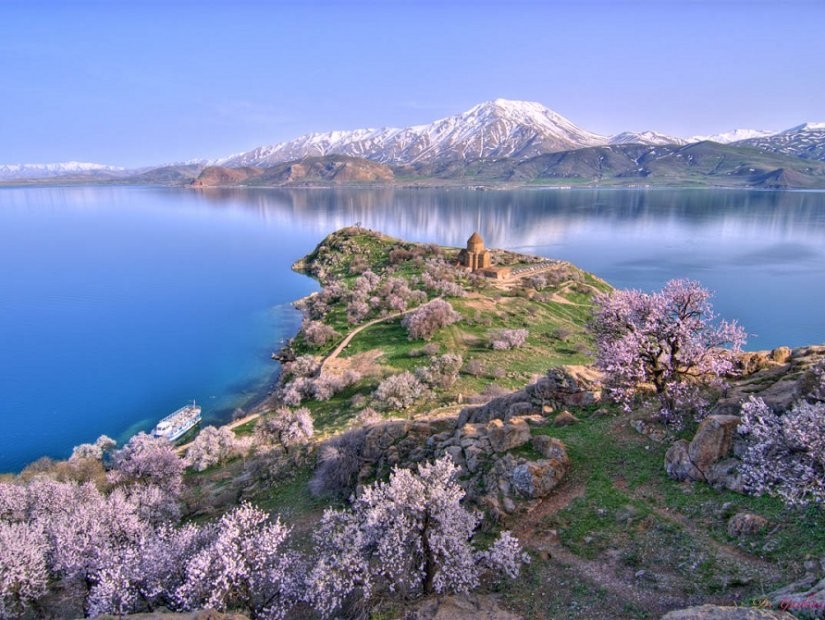Blog
Cathedral of the Holy Cross, Aghtamar
Cathedral of the Holy Cross, Aghtamar
Cathedral of the Holy Cross, Aghtamar
The Holy Cross Church (Akdamar Church) is located on Akdamar Island in Lake Van, inside the limits of the Gevaş District of the Province of Van. Lake Van is Turkey's biggest lake, located in the Eastern Anatolia area. The second biggest of Lake Van's four islands, Akdamar Island is also known as Aghtamar, Akhtamar, and Ahtamar. It covers around 700.000 m2 and is located approximately 3 kilometers from the beach.
The Holy Cross (Akhtamar) Cathedral in Van was constructed on King I. Gagik's orders in 915-921 to house a portion of the True Cross that is said to have been transported from Jerusalem through Iran and transferred to Van in the 7th century. Thomas Ardzruni, the recorder of King Gagik's exploits, provided the earliest information regarding the church's construction in the 10th century. The date of construction is further supported by an inscription on the west façade of the church and writings written in the late 18th and early 19th centuries.
The cathedral is regarded as one of the most important specimens of Armenian architecture from the Middle Ages. This church, which lies 45 kilometers from the heart of Van on the island of Akhtamar, is one of Mesopotamia's most historically significant structures. The church's and surrounding Armenian inhabitants' centuries-old existence lasted until the early twentieth century.
The four-lobed clover-like, cross-shaped design of Akdamar Church is known as the "Hripsime Type," after the Hripsime Church in Vagharshapat, which was built in 618 AD. The church's wall construction is made out of rectangular cut stones set on a two-tiered base. Smaller stones were utilized in the top levels than in the lower layers to reduce the weight of the walls. Stones of varying sizes were utilized in the same row as a preventive precaution against the area's frequent earthquakes, ensuring a better connection. It is a typical technique in Armenian art. Furthermore, the varied hues of tufa stones give the facades a colorful aspect, which minimizes monotony.
The Turkish government completed a restoration project in 2005-2006 to maintain the Akdamar Church's historical identity. The church was converted into a monument museum in 2007 and opened to the public. The administration agreed in 2010 to open the church once a year for religious events.


